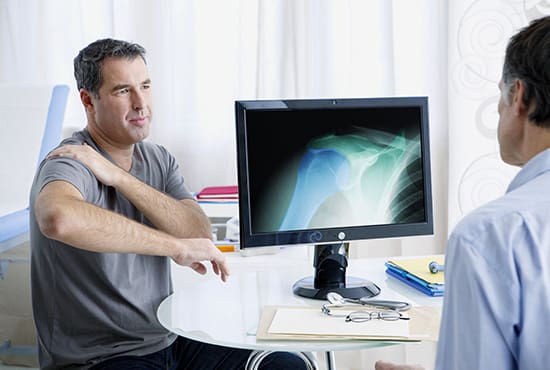How Is It Done?
Arthroscopic surgery is a minimally invasive procedure in which a high-definition, fiber optic camera is inserted through small incisions to evaluate the glenohumeral joint (shoulder joint), and supporting soft tissues, including the four rotator cuff muscles, labrum, biceps tendon, articular surfaces, ligaments, and bone. Once able to visualize the joint from inside, arthroscopic surgery allows surgeons to diagnose specific joint injuries and diseases, and even provides a way to treat certain problems by utilizing surgical instruments through tubes called cannulas.
Arthroscopic surgery to repair a damaged shoulder labrum most commonly involves: shaving away the torn portion to create a high-functioning, smooth edge, or physically repairing and reattaching torn tissue with anchors and sutures.
Generally, as arthroscopic surgery is performed in the least invasive manner possible, recovery is quicker and less painful. Most patients return home on the same day in which they have the surgery, and will have their arm protected in a sling or an abduction pillow for a 3-4 week period. Once removed from protection, it’s important to gradually increase flexibility in the shoulder and strengthen the biceps through physical therapy and exercise. Complete recovery varies, but 3-4 months typically pass before the shoulder will near full functional capacity from labral repair surgery. Complete healing of the shoulder, including resolution of swelling and minor aches and pains, may take as long as a year.

